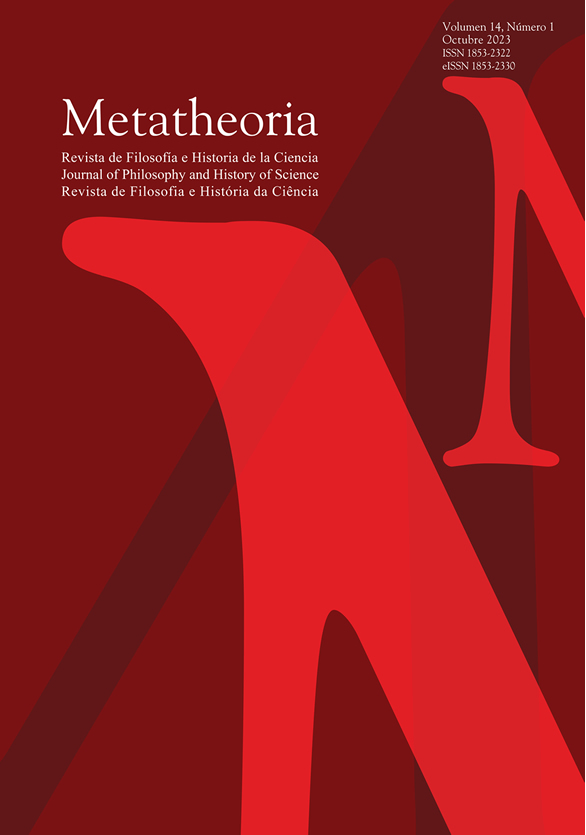Why the Darwinian Theory of Evolution Through Natural Selection is Relevant to Today’s Moral Issues
DOI:
https://doi.org/10.48160/18532330me14.353Keywords:
Darwin, evolution, natural selection, social issues, foreigners, class, sexual orientation, womenAbstract
Charles Darwin’s theory of evolution through natural selection, explaining geographical distributions and the fossil record, is rightly regarded as one of the greatest scientific theories of all time, taking its place alongside Isaac Newton’s theory of gravitational attraction, explaining the Copernican heliocentric world picture. There is, however, a tendency to think that Darwin’s work is finished. It belongs to Victorian history rather than as something that has crucial social relevance today. This essay shows how mistaken it is to make this assumption. Through a series of case histories―foreigners, class, sexual orientation, and women―Darwinism is shown to be as vibrant and important today as it was when Darwin was young. It is an essential tool for analyzing and solving some of the biggest and most pressing social issues facing us in the twenty-first century.
References
Adovasio, J. M., Soffer, O. y J. Page (2007), The Invisible Sex: Uncovering the True Roles of Women in Prehistory, New York: Collins.
Adriaens, P. R. y A. De Block (2022), Of Maybugs and Men: A History and Philosophy of the Sciences of Homosexuality, Chicago: University of Chicago Press.
Augustine ([413-426]1998), The City of God against the Pagans (editado y traducido por R. W. Dyson), Cambridge: Cambridge University Press.
Bell, A. y S. Weinberg (1978), Homosexualities - A Study of Diversity among Men and Women, New York: Simon and Schuster.
Browne, J. (1995), Charles Darwin: Voyaging. Volume 1 of a Biography, London: Jonathan Cape.
Browne, J. (2002), Charles Darwin: The Power of Place. Volume 2 of a Biography, London: Jonathan Cape.
Ceci, S. J. y W. M. Williams (2009), The Mathematics of Sex: How Biology and Society Conspire to Limit Talented Women and Girls, New York: Oxford University Press.
Darwin, C. (1868), The Variation of Animals and Plants Under Domestication, London: Murray.
Darwin, C. (1871), The Descent of Man, and Selection in Relation to Sex, London: John Murray.
Darwin, C. (1985), The Correspondence of Charles Darwin, Cambridge: Cambridge University Press.
Desmond, A. y J. Moore (2009), Darwin's Sacred Cause: How a Hatred of Slavery Shaped Darwin's Views on Human Evolution, New York: Houghton Mifflin Harcourt.
Dyble, M., Salali, G. D., Chaudhary, N., Page, A., Smith, D., Thompson, J., Vinicius, L., Mace, R. y A. B. Migliano (2015), “Sex Equality Can Explain the Unique Social Structure of Hunter-Gatherer Bands”, Science 348(6236): 796-798.
Gamble, E. B. (1894), The Evolution of Woman: An Inquiry into the Dogma of Her Inferiority to Man, New York: Putnam.
Hamlin, K. A. (2014), From Eve to Evolution: Darwin, Science, and Women's Rights in Gilded Age America, Chicago: University of Chicago Press.
Haynes, S. R. (2002), Noah's Curse: The Biblical Justification of American Slavery, Oxford: Oxford University Press.
Hrdy, S. B. (1999), Mother Nature: A History of Mothers, Infants, and Natural Selection, New York: Pantheon Books.
Jarvenpa, R. y H. J. Brumbach (2014), “Hunter-Gatherer Gender and Identity”, in Cummings, V., Jordan, P. y M. Zvelebil (eds.), The Oxford Handbook of the Archaeology and Anthropology of Hunter-Gatherers, Oxford: Oxford University Press, pp. 1243-1265.
LeVay, S. (2010), Gay, Straight, and the Reason Why: The Science of Sexual Orientation, Oxford: Oxford University Press.
McPherson, J. M. (1988), Battle Cry of Freedom: The Civil War Era, New York: Oxford University Press.
Mivart, S. G. J. (1874), [Review] “Researches into the early history of mankind [etc.]”, Quarterly Review 137: 40-77.
Reich, D. (2018), Who We Are and How We Got Here: Ancient DNA and the New Science of the Human Race, New York: Pantheon.
Ritvo, L. R. (1990), Darwin's Influence on Freud, New Haven, Conn.: Yale University Press.
Ruse, M. (1988), Homosexuality: A Philosophical Inquiry, Oxford: Blackwell.
Ruse, M. (2022), Why We Hate: Understanding the Roots of Human Conflict, Oxford: Oxford University Press.
Selous, E. (1901), “An Observational Diary of The Habits - Mostly Domestic - Of the Great Crested Grebe (Podicipes Cristatus). Continued As: An Observational Diary of The Habits - Mostly Domestic - Of the Great Crested Grebe (Podicipes Cristatus), And of The Peewit (Vanellus Vulgaris), With Some General Remarks”, Zoologist 5: 161-183, 339-350, 454-462, 6: 133-144.
Smith H. M., Chiszar, D. y R. R. Montanucci (1997), “Subspecies and Classification”, Herpetological Review 28: 13-16.
Downloads
Published
How to Cite
Issue
Section
License
LicenseThe documents published here are governed by the licensing criteria
Creative Commons Argentina.Atribución - No Comercial - Sin Obra Derivada 2.5 https://creativecommons.org/licenses/by-nc-nd/2.5/ar/





